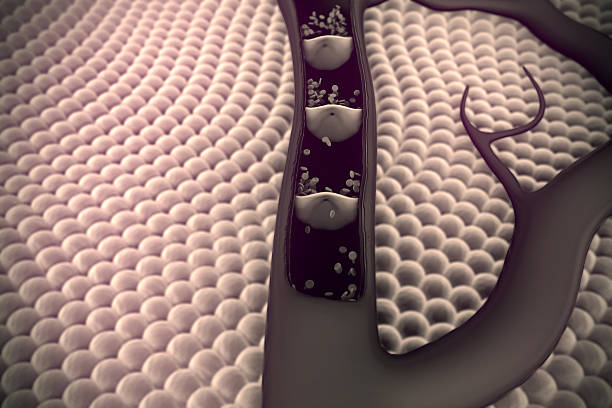Lipolysis is the metabolic pathway through which triglycerides (fat stored in fat cells, also known as adipocytes) are broken down into glycerol and free fatty acids. These products can then be used as energy sources by the body. The lipolysis process involves several key steps:
1. Hormonal Activation
- Hormones Involved: The process of lipolysis is primarily regulated by hormones such as catecholamines (e.g., adrenaline, noradrenaline), glucagon, growth hormone, and cortisol.
- Activation: When the body needs energy, these hormones bind to receptors on the surface of adipocytes, triggering a signaling cascade.
2. Activation of Adenylyl Cyclase
- cAMP Production: Hormonal binding activates adenylyl cyclase, an enzyme that converts ATP to cyclic AMP (cAMP).
- Protein Kinase A Activation: The increase in cAMP levels activates protein kinase A (PKA).
3. Phosphorylation of Hormone-Sensitive Lipase (HSL)
- Activation of HSL: PKA phosphorylates hormone-sensitive lipase (HSL) and other lipases, which are crucial enzymes in the lipolysis process.
- Translocation of HSL: Phosphorylated HSL translocates to the lipid droplet within the adipocyte, where it can access triglycerides.
4. Hydrolysis of Triglycerides
- Triglyceride Breakdown: HSL and other lipases, such as adipose triglyceride lipase (ATGL) and monoglyceride lipase (MGL), sequentially hydrolyze triglycerides.
- Products: This breakdown releases free fatty acids (FFAs) and glycerol.
5. Release of Free Fatty Acids and Glycerol
- Circulation: Free fatty acids and glycerol are released into the bloodstream.
- Transport: FFAs are typically bound to albumin in the blood, which transports them to tissues where they can be oxidized for energy (such as muscle and liver cells).
6. Glycerol Utilization
- Liver: Glycerol is transported to the liver, where it can be used in gluconeogenesis to produce glucose.
7. Fatty Acid Oxidation
- Beta-Oxidation: Once inside cells, free fatty acids undergo beta-oxidation in the mitochondria, producing acetyl-CoA, which enters the citric acid cycle to generate ATP.
This pathway is essential for maintaining energy homeostasis, especially during periods of fasting, exercise, or other conditions requiring increased energy demand.

What is the lipolysis cycle?
The term “lipolysis cycle” typically refers to the cyclical process by which triglycerides in adipose tissue are broken down into free fatty acids and glycerol, which are then released into the bloodstream for energy production. This process is not exactly a “cycle” in the traditional biochemical sense like the citric acid cycle, but it involves repeated activation and regulation based on the body’s energy needs. Here’s how the lipolysis cycle operates:
1. Hormonal Signal Initiation
- Energy Demand: When the body requires energy, hormones such as adrenaline, noradrenaline, glucagon, and cortisol are released.
- Receptor Activation: These hormones bind to receptors on the surface of adipocytes (fat cells), triggering a signaling cascade that activates the enzymes necessary for lipolysis.
2. Signal Transduction
- cAMP Production: The binding of hormones to their receptors activates adenylyl cyclase, which converts ATP to cyclic AMP (cAMP).
- Activation of Protein Kinase A (PKA): The rise in cAMP activates PKA, which in turn phosphorylates hormone-sensitive lipase (HSL) and other enzymes involved in lipolysis.
3. Enzyme Activation and Triglyceride Breakdown
- Phosphorylation of Lipases: PKA phosphorylates HSL, which becomes active and moves to the surface of lipid droplets in the adipocyte.
- Sequential Lipolysis: Lipases (HSL, ATGL, MGL) sequentially break down triglycerides into diglycerides, then monoglycerides, and finally into glycerol and free fatty acids (FFAs).
4. Release of Free Fatty Acids and Glycerol
- Transport to Bloodstream: The free fatty acids and glycerol are released from the adipocytes into the bloodstream.
- Binding to Albumin: Free fatty acids are bound to albumin, a protein in the blood, which helps transport them to various tissues.
5. Utilization of Free Fatty Acids
- Beta-Oxidation: In tissues like muscle and liver, free fatty acids are taken up by cells and transported to the mitochondria, where they undergo beta-oxidation to produce acetyl-CoA.
- Energy Production: Acetyl-CoA enters the citric acid cycle, leading to the production of ATP, the energy currency of the cell.
6. Utilization of Glycerol
- Gluconeogenesis: Glycerol is transported to the liver, where it can be converted into glucose via gluconeogenesis, contributing to maintaining blood glucose levels.
7. Feedback and Regulation
- Inhibition of Lipolysis: When energy demands are met, insulin (released in response to high blood glucose) inhibits lipolysis by decreasing cAMP levels and promoting the storage of free fatty acids as triglycerides.
- Energy Balance: The process is tightly regulated to balance energy supply with demand, preventing excessive breakdown of fat stores when not needed.
Cycle Repeats
The “lipolysis cycle” is a dynamic process, repeating as often as the body requires energy from fat stores. During periods of fasting, exercise, or stress, lipolysis is upregulated to provide the necessary energy. Conversely, after eating (especially a carbohydrate-rich meal), insulin is released, which suppresses lipolysis and promotes fat storage.
This cyclical regulation ensures that the body has a continuous supply of energy while maintaining fat stores for future use.
